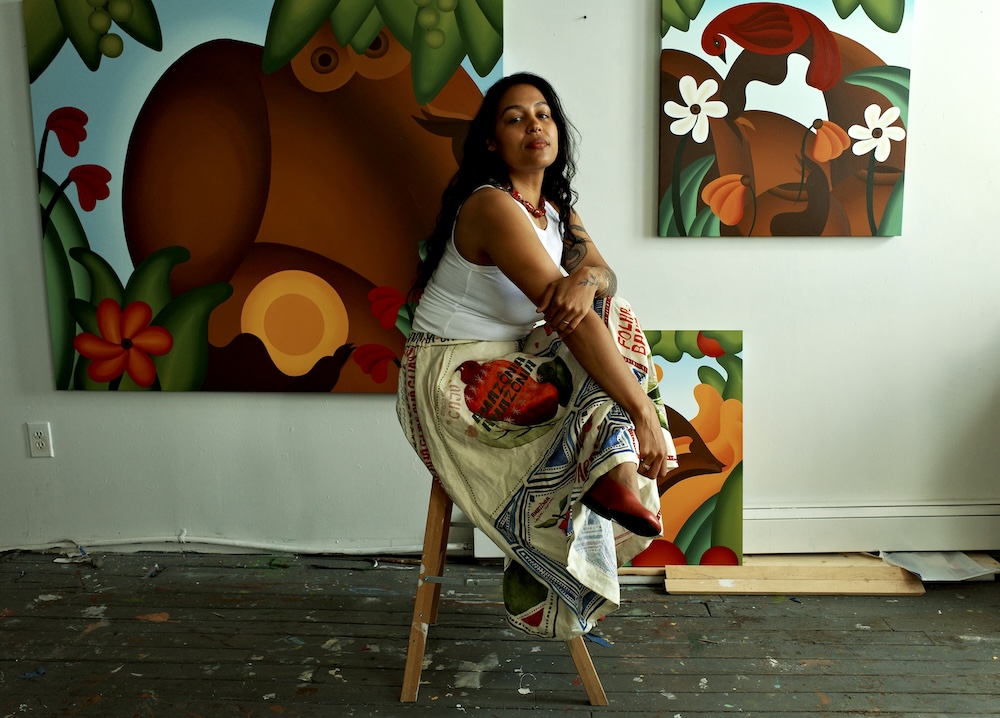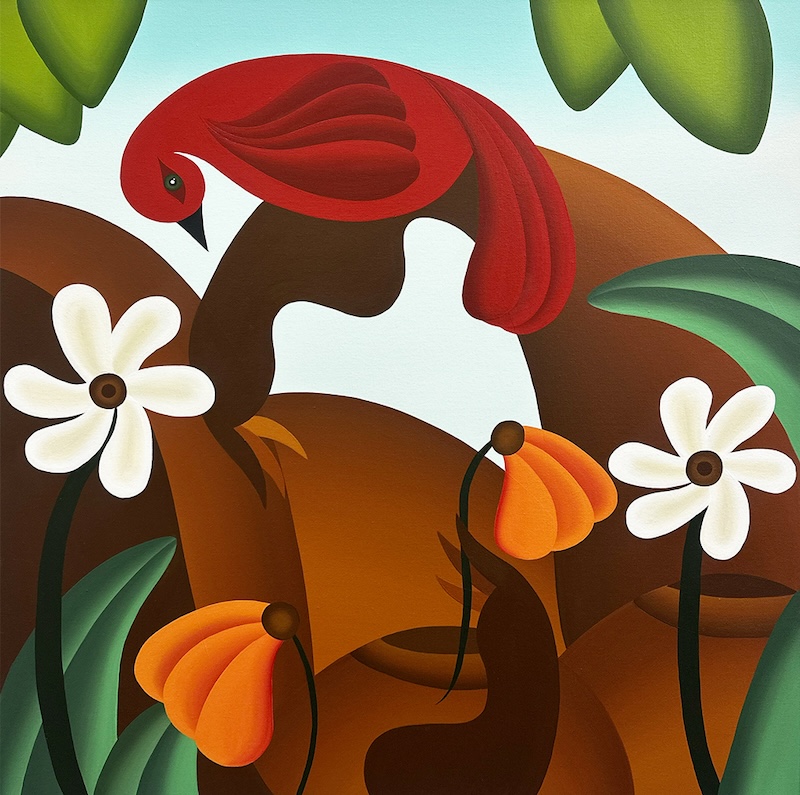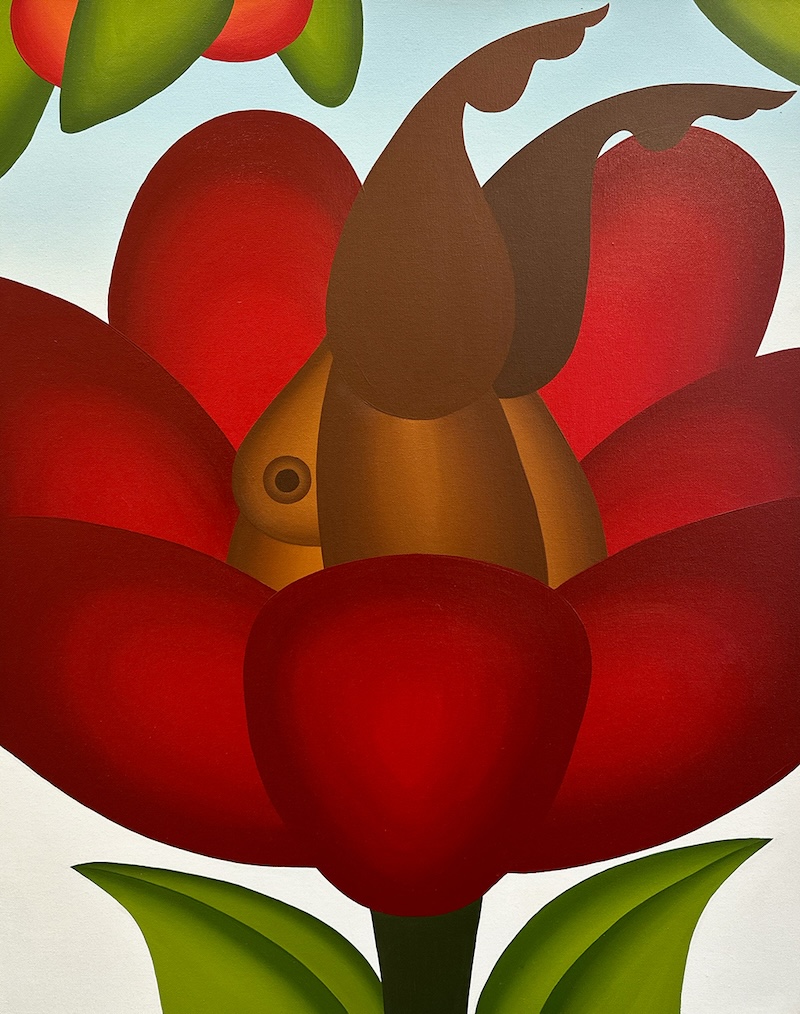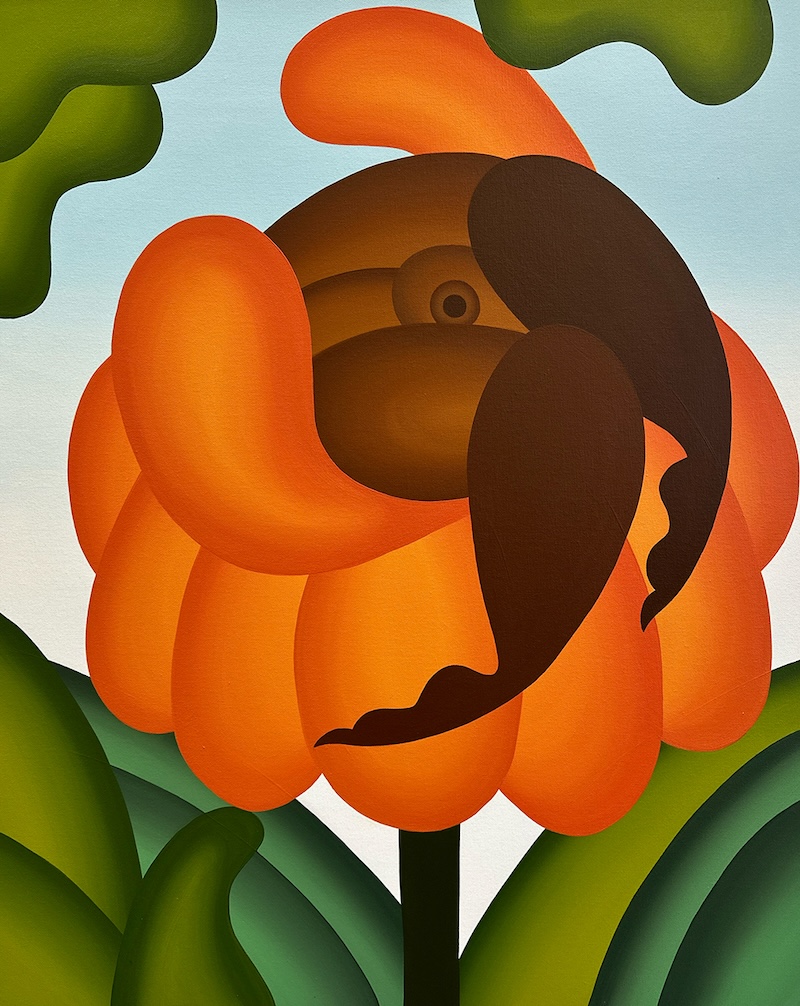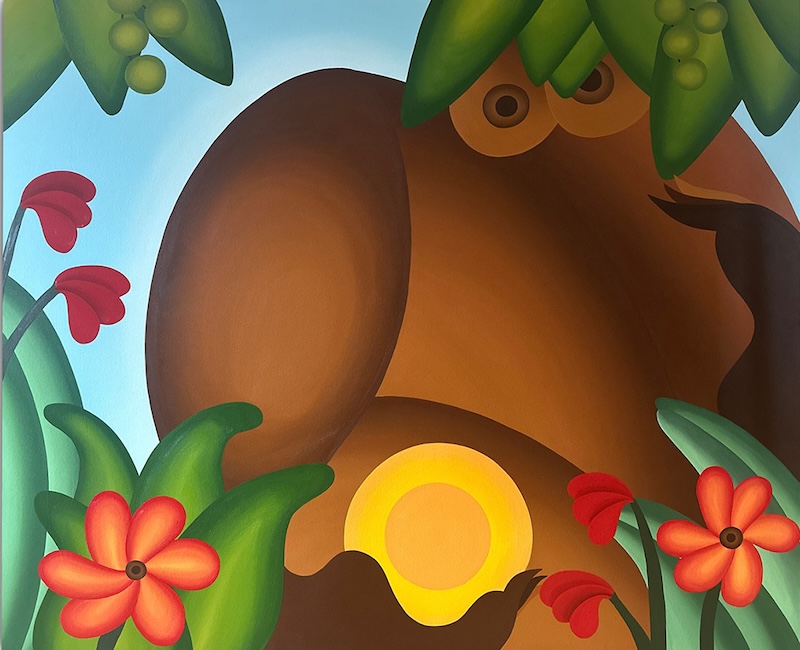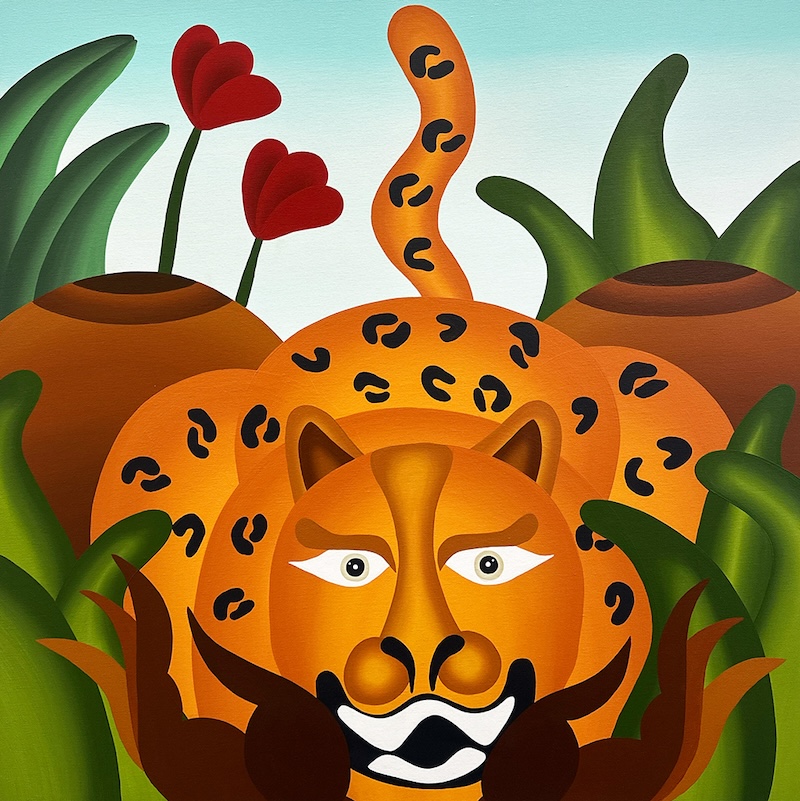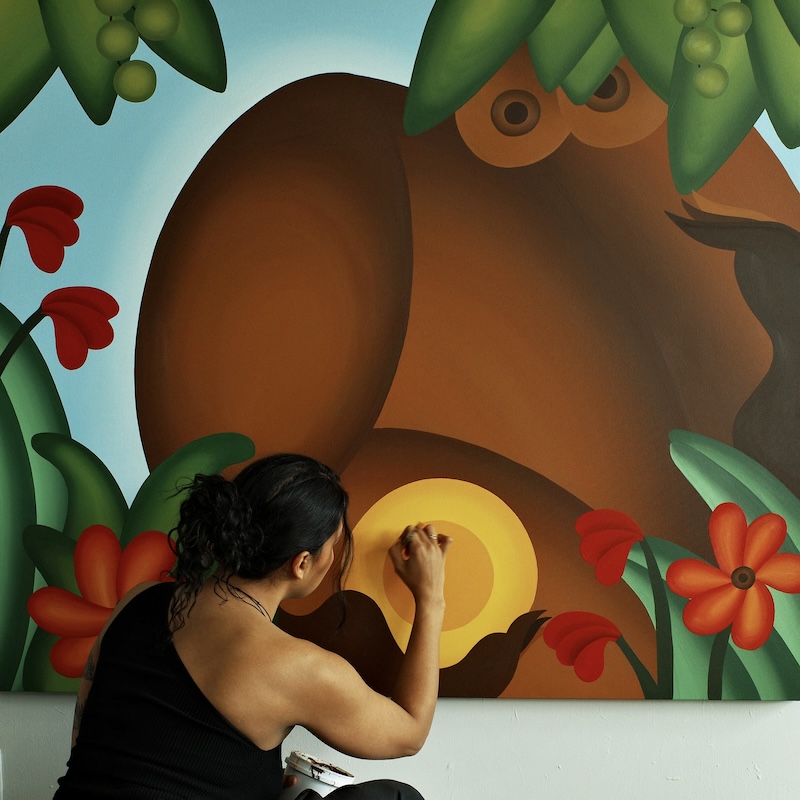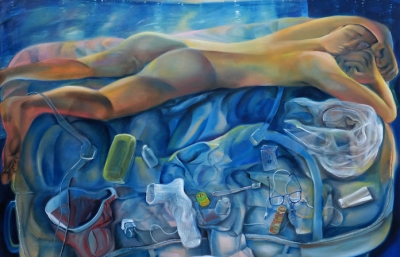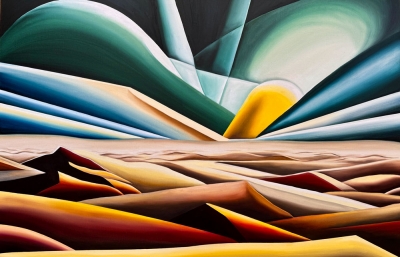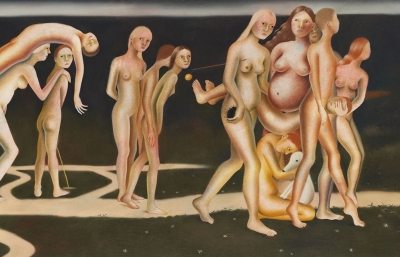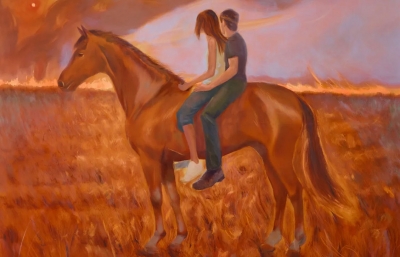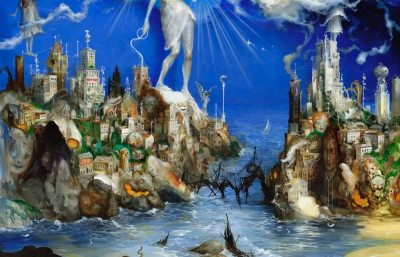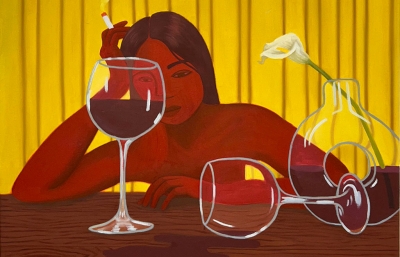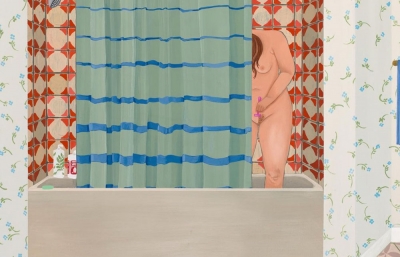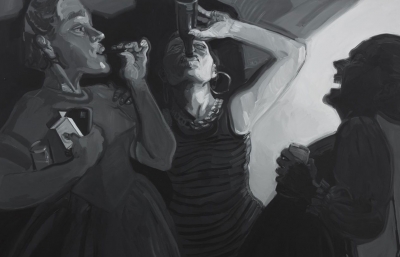The garden has been a realm of imaginative speculation and potential for generations of artists. In her Taipei Dangdai debut with Hashimoto Contemporary, painter Bianca Nemelc builds on a legacy of progressive thinkers, melding art historical references from the tropics with familial narratives to create a garden that transcends the confines of reality where humans and nonhumans merge seamlessly. Rendered in vibrant colors and elegant brush strokes, these acrylic on canvas paintings cast Brown women as formidable mountains and fierce jaguars. In an installation designed specifically for Nemelc’s new works, these lush paintings compel us to reassess anthropocentric worldviews and how our perceptions of women are tangled with our conceptions of nature, manifesting a space as heterogeneous and blended as the world she knows.
Recalling Nemelc’s culturally diverse neighborhood of Washington Heights in New York City, the series weaves personal anecdotes and intimate memories into broader inquiries about life experiences and the treatment of marginalized bodies. In Sun Catcher, a towering Brown figure seems to rotate within the canvas, a visual and narrative reference from the Brazilian Modernist painter Tarsila do Amaral’s iconic work Abaporu, where the figure’s disproportionate, pear-like limbs are used to devour flesh. Nemelc’s twirling figure consumes the sun—she is more powerful than the fiery being that bestows life. In another painting, the artist depicts Brown bodies playfully twisting and dancing inside the petals of a flower, embodying the sweetness of the fruits produced by the plant. By emphasizing the symbiotic relationship between the plants and the agile figures, these pieces subvert the notion of a flower as an object to be possessed or exploited; instead, the artworks offer a mode of resistance against fetishistic depictions of both land and women from the tropics. These women who embody the land remain anonymous and distant from the viewer, forming part of Nemelc's visual narrative of beauty and resistance—a sanctuary within this untamed garden for herself and others.
About this new work the artist writes, “Much like humans, flowers migrate and adapt, sometimes by design and other times because of external forces. Some are exotic, others labeled invasive when they become part of the natural landscape. The garden is the beginning of creating a space where all things coexist in the same way that they do in my head—mixing identities, memories with imagination and having all worlds come together.”



